Icon vs. Underdog: BMW M3 E36 vs Mercedes C36 AMG
It’s all about the 36s with our latest icon-versus-underdog comparison: the E36 generation of the BMW M3 (1990–2000), and the Mercedes C36 AMG, which was based on the W202-generation C-Class (1993–2000).
Launched in the first half of the 1990s, these cars were contemporary rivals, each fielding a high-revving inline-six-cylinder and rear-wheel drive, flying the flag for each marque’s performance capabilities. And unlike their respective predecessors, these 1990s sports sedans did not serve as homologation specials for factotry racing campaigns, so each offered a little more refinement and luxury.
The Mercedes is undoubtedly the underdog here, not just to the widely beloved M3, but also to the C43 and C55 that followed it—the V-8 engines in those cars laid the template for many AMGs that followed. So with the help of Hagerty’s valuations experts, here’s a look at how the E36 M3 and the C36 AMG compared in period, and how they compare today.
Potted history: E36 M3 and C36 AMG
It’s easy to forget, but the E36’s predecessor, the E30-chassis 3 Series, was feeling distinctly long in the tooth as the early 1990s dawned. While still competitive, it was no longer a guaranteed comparison-test winner. The E36 chassis, when it arrived in 1991, was sleeker, more modern, and more practical, and it elevated the 3er’s standing among its rivals back up to near-untouchable.
The E36 was also more mature, which opened up a new direction when BMW launched the M3 in Europe in late 1992, and stateside in 1995. That car’s visuals spoke more softly than those of its predecessor, but with a 3.0-liter S50 inline-six making 240 hp—the E30 had used a 192-hp four-cylinder—it carried a bigger stick. (In Europe, those first E36 M3s offered 286 hp. We’re jealous.) Sensing the model’s wide potential, BMW also offered the M3 as a sedan and a convertible.
In 1996, the 3.0-liter S50 made way for a 3.2-liter variant with the same 240 hp but an additional 11 lb-ft of torque. The Euro-spec version of that 3.2 made a genuine 100 hp per liter, putting its specific output in the rarefied company of cars like the McLaren F1. Outside the U.S., customers enjoyed a motorsport-style single-clutch automated manual, dubbed SMG—for Sequential Manual Gearbox—alongside the standard six-speed manual; U.S. buyers made do with a five-speed manual or a five-speed, torque-converter-equipped automatic.
The Mercedes-Benz C36 AMG arrived in 1994, two years before the M3 got its capacity bump. It holds the distinction of being the first AMG model developed after that brand and tuning company were absorbed by the Mercedes mothership, but the car was in no way watered down.
AMG took the 3.2-liter, 24-valve Mercedes inline-six, as found in cars like the SL320 and S320, and worked it over. The engine was enlarged in both bore and stroke, hand-assembled with forged pistons, new camshafts, and revised management for a 268-hp output. Power was routed through a standard five-speed automatic gearbox.
These were both rapid cars for the period. The 3.0-liter M3 reached 62 mph in six seconds flat, the C36 in 6.9. Both wore a 155-mph electronic speed limiter.
Neither car was perfect. In a February 1994 test, CAR magazine rued the M3’s slow steering and the AMG’s overeager and nondefeatable traction control, declaring neither as exciting as its predecessor (that E30 M3 and the Mercedes 190E 2.5-16 Cosworth, respectively). Hagerty’s James Mills distinctly remembers C36 test cars running out of brakes on the road, and E36s being somewhat spiky at the limit.
On the other side of the Atlantic, the E36 M3 found more favor; in 1997, Car and Driver crowned the BMW its Best Handling Car for More Than $30,000. The magazine’s test group contained heavy hitters like the Acura NSX and the Ferrari F355.
Each of these sport sedans was improved by evolution—the E36 with its 3.2, and the AMG when it eventually gained a V-8, becoming another model entirely, the C43. But both set new performance standards for their era.
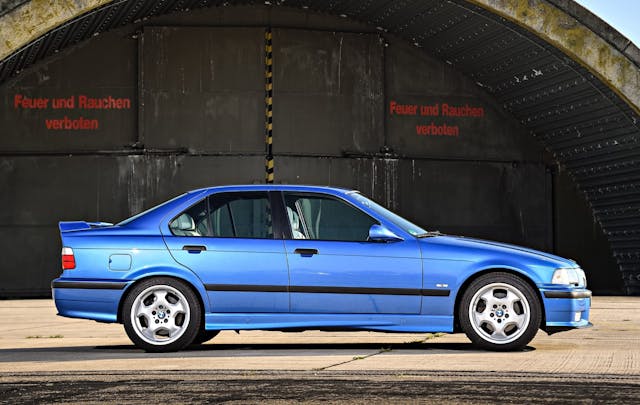
Why you want one
For some BMW fans, the E36 M3 sits in a slightly uncomfortable position in its maker’s history. That the car was less raw than its predecessor was apparent from launch; that BMW would follow the E36 with the E46 M3, perhaps one of the greatest cars the M division has ever built, might leave the E36 M3 seeming neither here nor there.
But let’s be realistic: This is still an M3. It is still based on one of BMW’s most handsome and beloved model lines, and while its motorsport origins weren’t as clear as those of the E30, the E36’s wildly successful campaign in period touring-car racing has undoubtedly reflected well on the car. Even the exalted E46 can’t boast that.
There’s also the matter of the midlife engine upgrade, and a chassis that was improved a little over time. An E36 today also feels quite intimate compared to more recent M3s. This is a fun and involving car to drive by modern standards, and the aftermarket is only too willing to improve on its qualities.
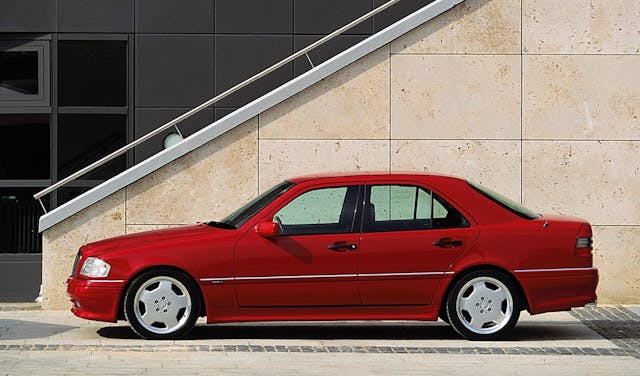
Intimate isn’t a word you’d use to describe the C36 AMG. In period, the W202 C-class always felt more prim and proper than the E36, and the absence of a manual transmission immediately takes the car down a notch in driver appeal.
And yet . . . how good does the W202 still look, particularly in AMG trim? With just a hint more aggression to the bodywork and a set of stout-looking AMG monoblocks squeezed under the arches? The stance is arguably even more touring-car than that of the M3, and some may prefer the C36’s more grown-up approach inside and out.
It’s also a car of different character from later AMGs, a tone appealing in its own right. That bored-and-stroked M104 inline-six is unique among AMGs in cylinder count and in its use of forced induction; while it must work harder than those V-8s, that’s all part of the car’s character. That engine loved to rev and sounded great hanging out in the last third of the tach. Treat the Mercedes less like a sports car and more like a rapid, comfortable conveyance, the appeal only grows.
Values:
One step removed from the 1980s touring-car specials that helped popularize the smaller side of their respective brand’s lineups, the M3 and C36 AMG offer top-of-field performance for their era. The M3 stands well above the AMG in value despite the vast difference in production numbers. (More than 70,000 M3s were sold globally, compared with more than 5000 C36 AMGs.)
What’s behind that? The name is inextricably linked with the racing success of its badge, and its E30 predecessor, while this non-V-8 AMG is considered by many to be the runt of the litter. Also, early AMG cars have been cheap for a long time—the market is undoubtedly full of affordable cars with inadequate service history, so caveat emptor.
Hagerty’s demographic data show strong interest by younger collectors in the M3, with almost 53 percent of quotes sought by Millennials and Gen Z. Gen X fills a healthy contingent, too, comprising 27 percent of quotes.
The W202 C-class as a whole skews toward an older bunch, with Boomers and Preboomers making up about half of quoted interest and Gen X slotting in at 21 percent. C36-specific data is much slimmer (only 68 quotes in the past 3+ years), and a lot younger. The share of quotes from Gen X and younger has grown each year since 2020; from 60% to 81% in 2021, to 90% last year, and 100% so far this year.
Icon or underdog?
You probably already know whether you’re an M person or an AMG one. Though the M3 is the clear overdog in this battle, the final decision is probably most influenced by personal preference.
Consider this a reminder that you need not always go down the obvious route to end up with a car that’s both entertaining to drive and satisfying to own. Among 1990s performance cars, the M3 is something of a default choice, but the AMG offers a tempting alternative: less focus on 95th-percentile dynamics, and a larger lens on elegant, refined, and considered speed.
If there’s one thing to make a note of with both models, it’s condition. If you don’t know the seller and the history of the car, then a thorough inspection by a specialist is vital. Most M3s and C36s have been used hard, both of their unibodies suffer from corrosion (the Mercedes moreso than the BMW), and faults with each can require expert attention to rectify.
Go in with your eyes open, though, and you’ll emerge with cars that are not only more affordable than the models they replaced, but that deliver higher performance and a more livable, everyday character. Icons, both.
***
Check out the Hagerty Media homepage so you don’t miss a single story, or better yet, bookmark it. To get our best stories delivered right to your inbox, subscribe to our newsletters.
Via Hagerty UK
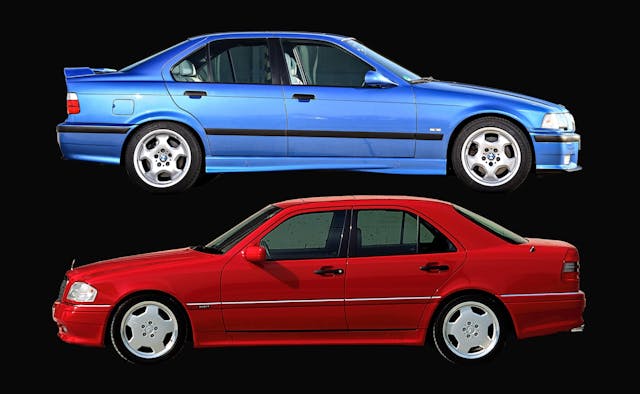
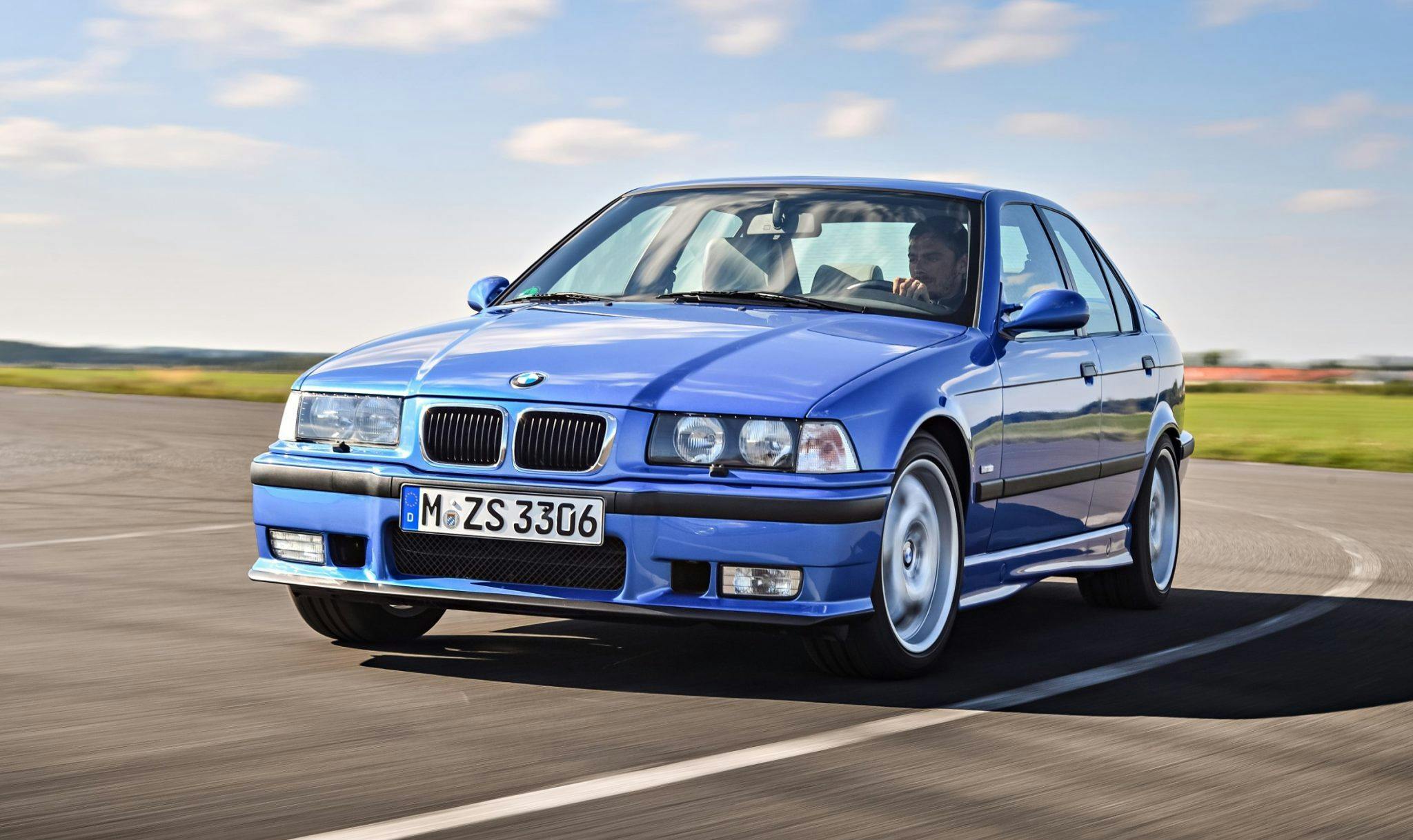
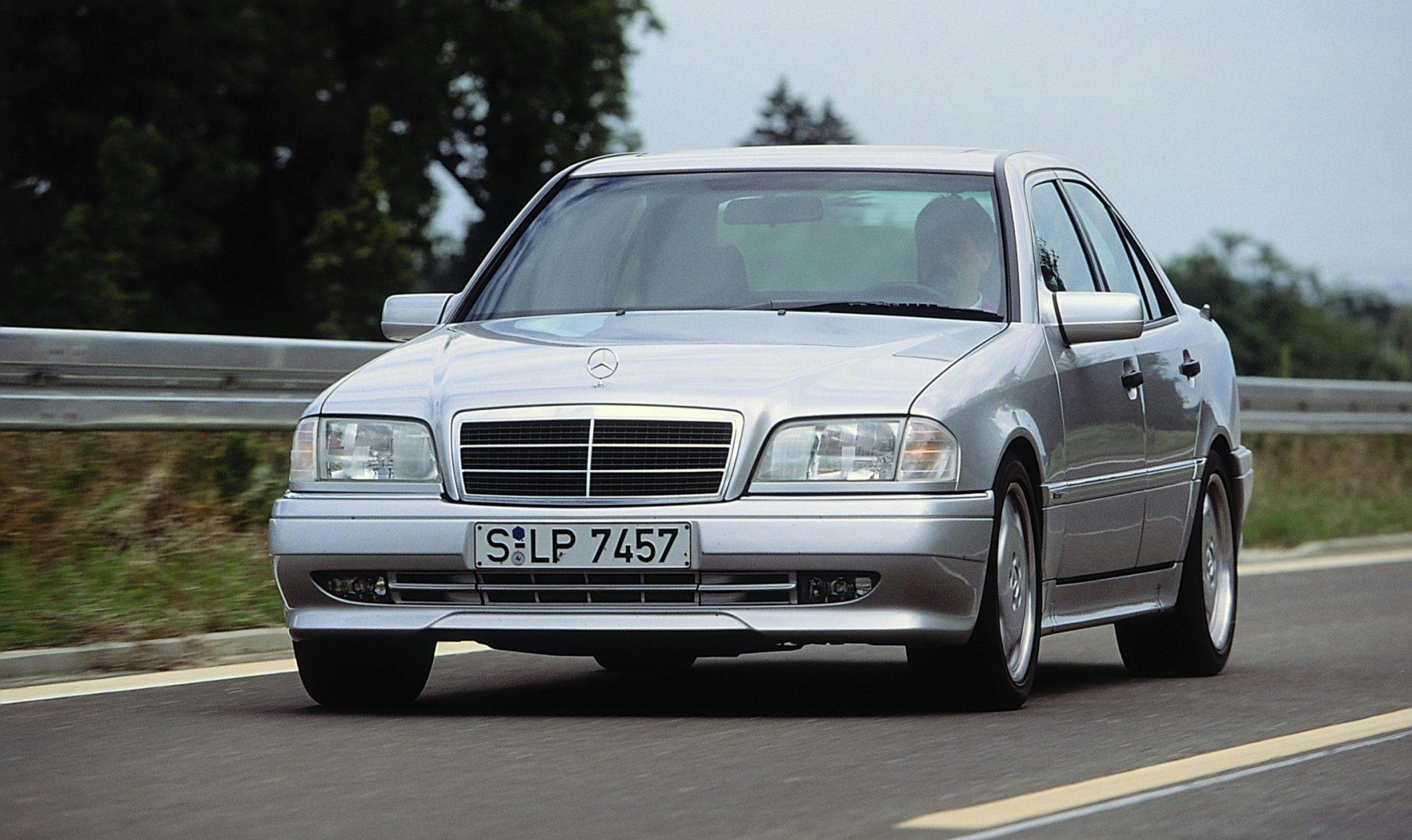
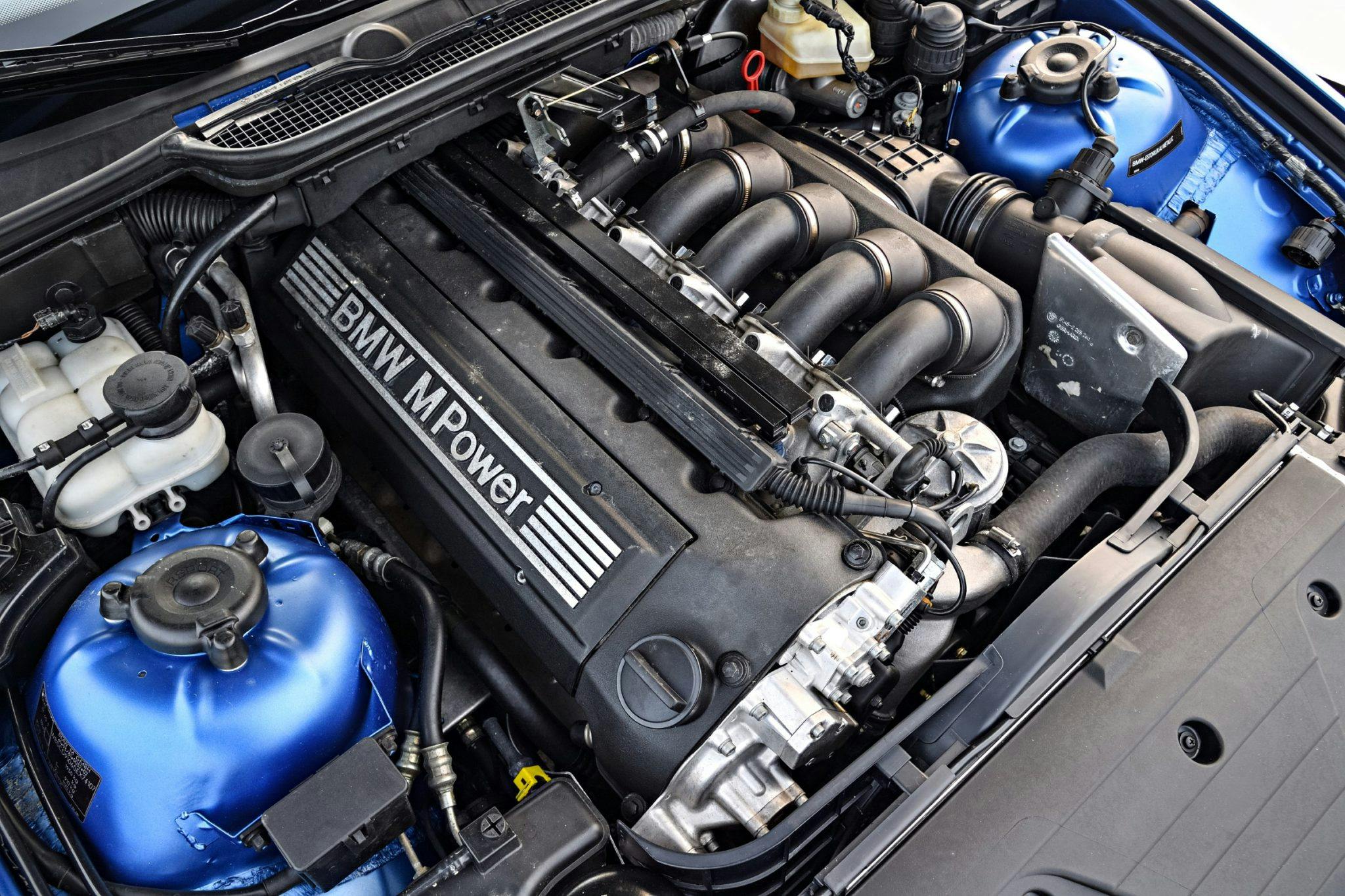
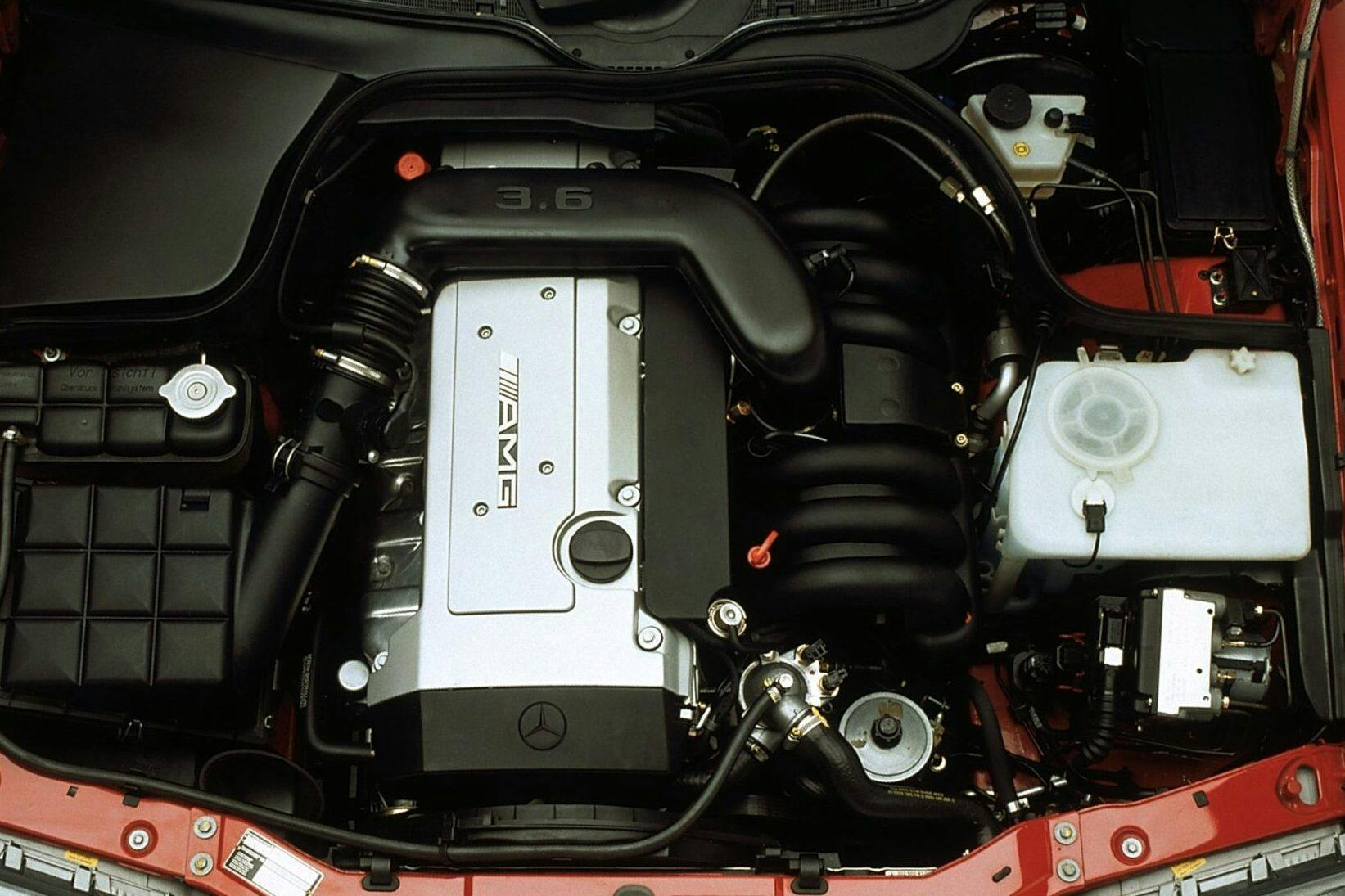
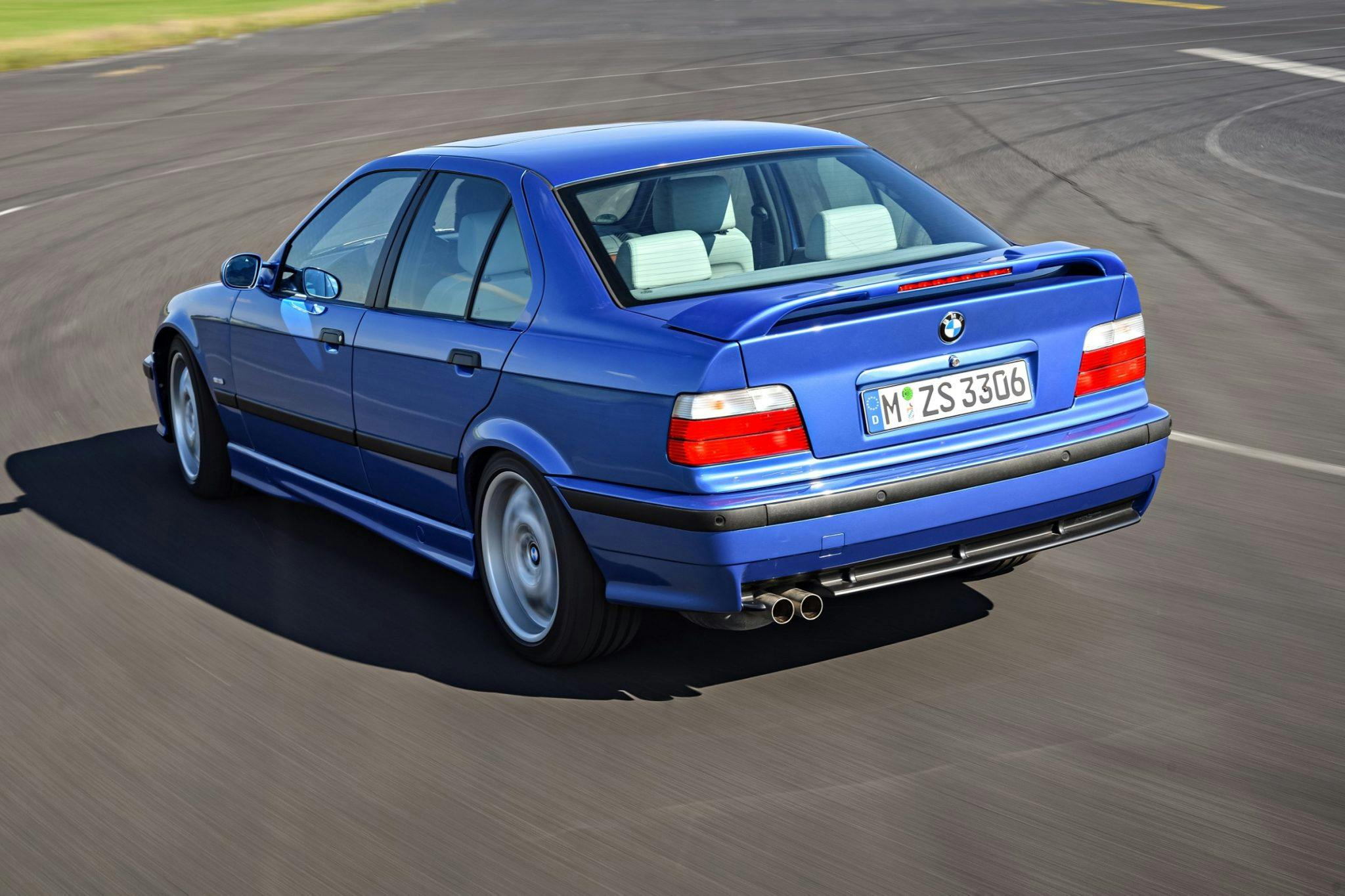
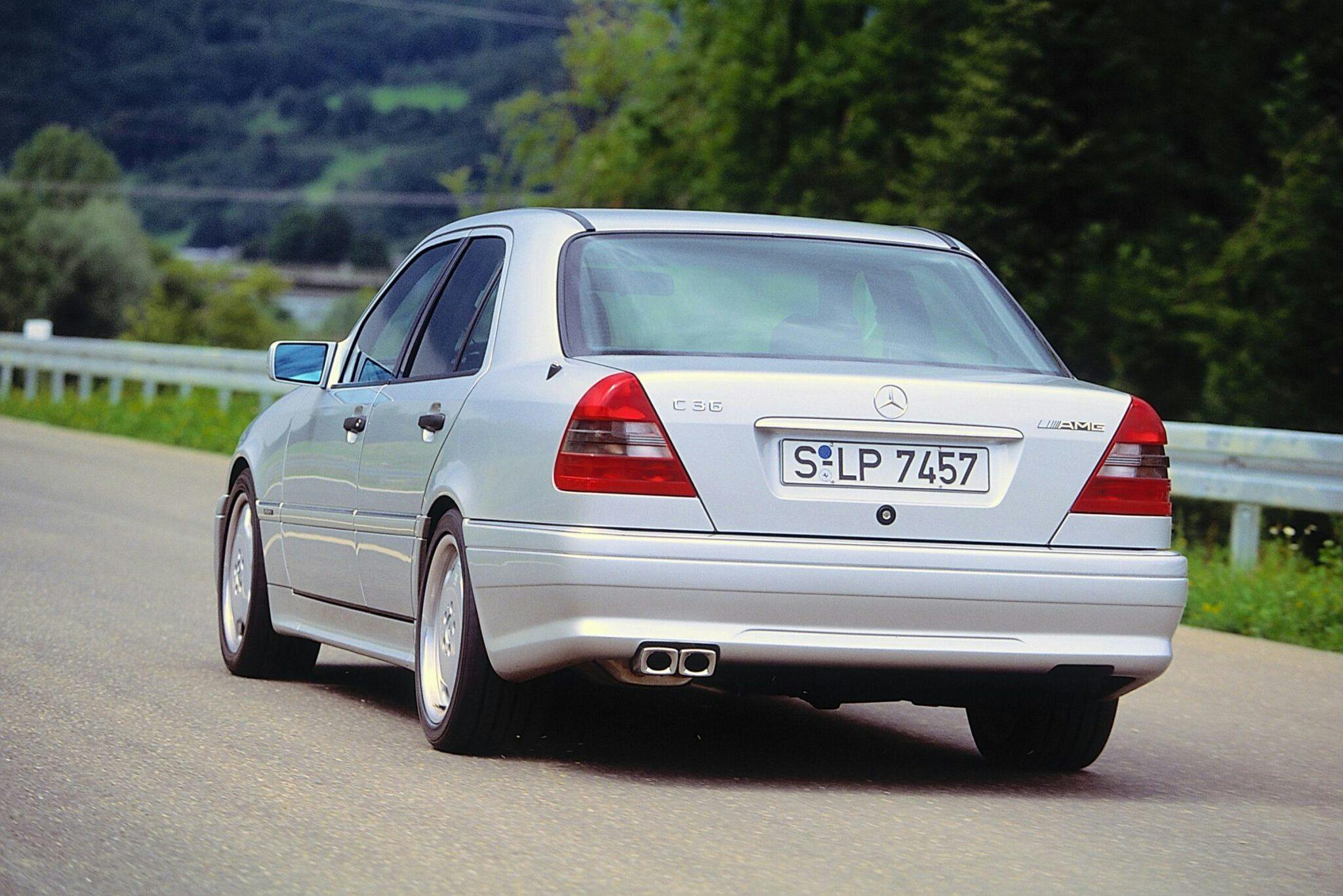

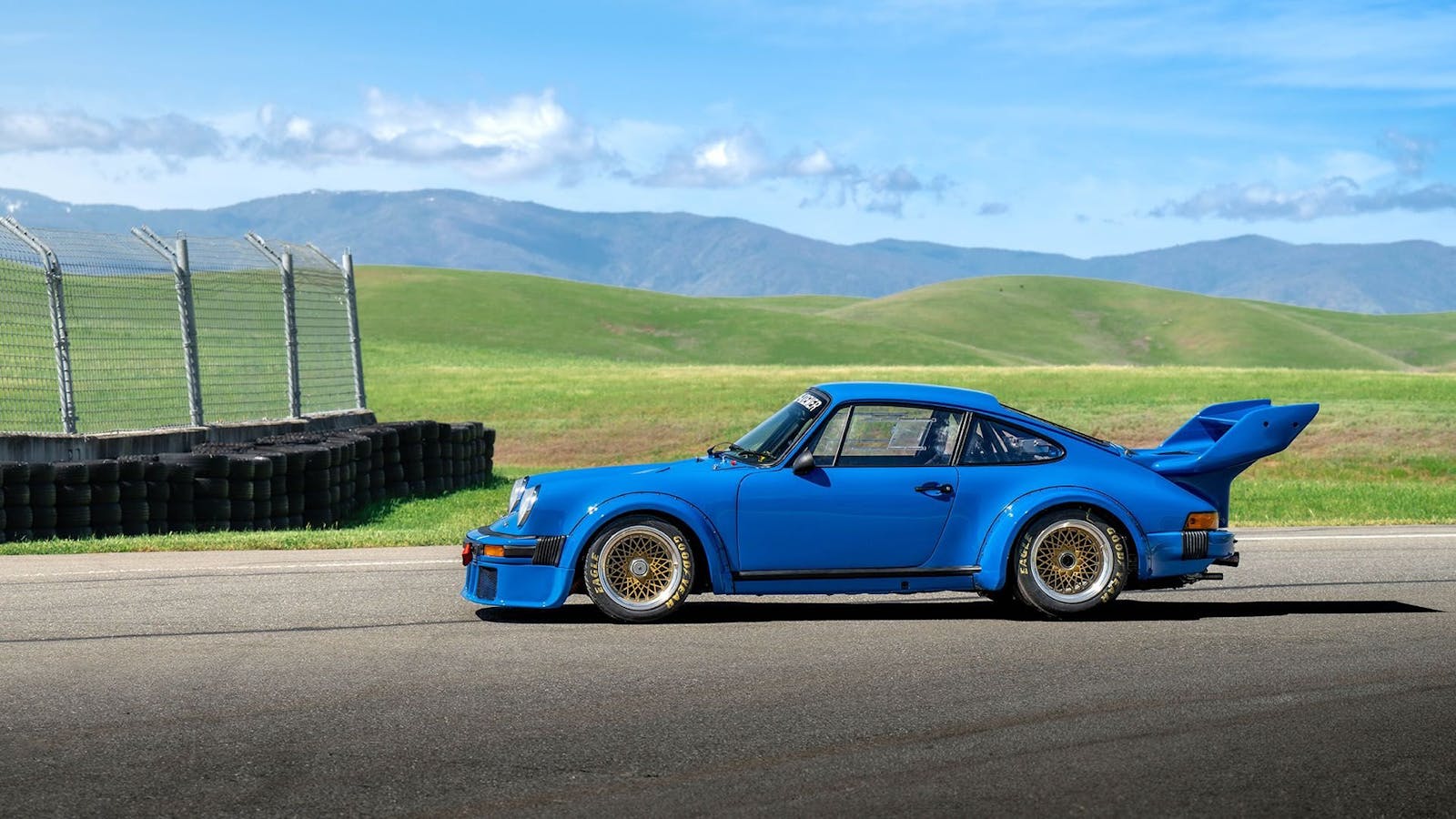
Great to see some limelight shed on these two iconic Radwood era German giants. Now perhaps Hagerty could see fit to add the 1998 Mercedes C43 AMG to their own value guide. In 1998, the C43 was the ONLY AMG model offered for sale in the USA, so undoubtedly there is some interest in them.
How do you not drop the link to this amazing piece of auto journalism FROM ONE OF YOUR OWN?
https://www.youtube.com/watch?v=Xatzi2Whnjo
I had a 99 M3 Convertible in the Electric Blue color pictured here … I loved that car more than any other car I’ve ever owned and I’ve owned Porsche’s, Jaguars, more than a dozen Mercedes & BMW’s , Corvette’s, you get the picture …It “did so many things Right”…I sold it more than 15 years ago and I still regret letting it go…
Between these two the M3 is the better of the duo for sporty handling. It has better motor, handling, etc. The C63 was much softer. However the characters of these two do kind of have two different groups of followers and I don’t think you can make a bad choice here. I think the C63’s got much better when they got V8’s.
The e36 M3 is the one I chose. Everyone claims the later e46 is better but I’d argue the e36 is much cooler looking and gives a more exciting raw experience. I’ve driven an e46 M3 and to me it feels like a smaller e39 M5, not a bad thing but definitely refined for a sports car.
I’m not really familiar with the AMG discussed here, but I’m down to try any car with a good inline 6.
The greatness of the E36 M3 was well recognized in the 1990s when new and continues to be recognized today. I’ve owned one for a decade and every superlative written about it is true, and in every practical way it’s better than the E30 M3. But the C36 AMG, which I own today, is the one of the greatest secrets of the 1990s and probably among the most undervalued.
Compared with the E36 M3, the C36 is more refined, sophisticated, and mature. It’s a mild-mannered Clark Kent with a quiet confidence that can effortlessly transform into Superman on the highway. This is the car I prefer daily driving and the car I’d pick for a road trip in a heartbeat.
Compared to the C43, the C36 is something special. The C36 is the last of the AMGs with a tuner feel before AMG was integrated into the rest of MB engineering. It was partially assembled as a C280, then shipped to AMG in Affalterbach where the 2.8 engine was removed and replaced with the hand-built 3.6, then the aero kit, suspension, brakes, wheels, and interior trim were hand installed and shipped back to the MB factory for distribution. As a result, it was literally as expensive as an S-Class in 1995. The C43, on the other hand, was fully integrated into series production and built alongside all the other W202s in Bremen. The C43 is amazing in its own way and feels more complete, but less special.
And fully agree with the article here, the most compliments and interest I get for my C36 are from Gen Zers and Millennials!